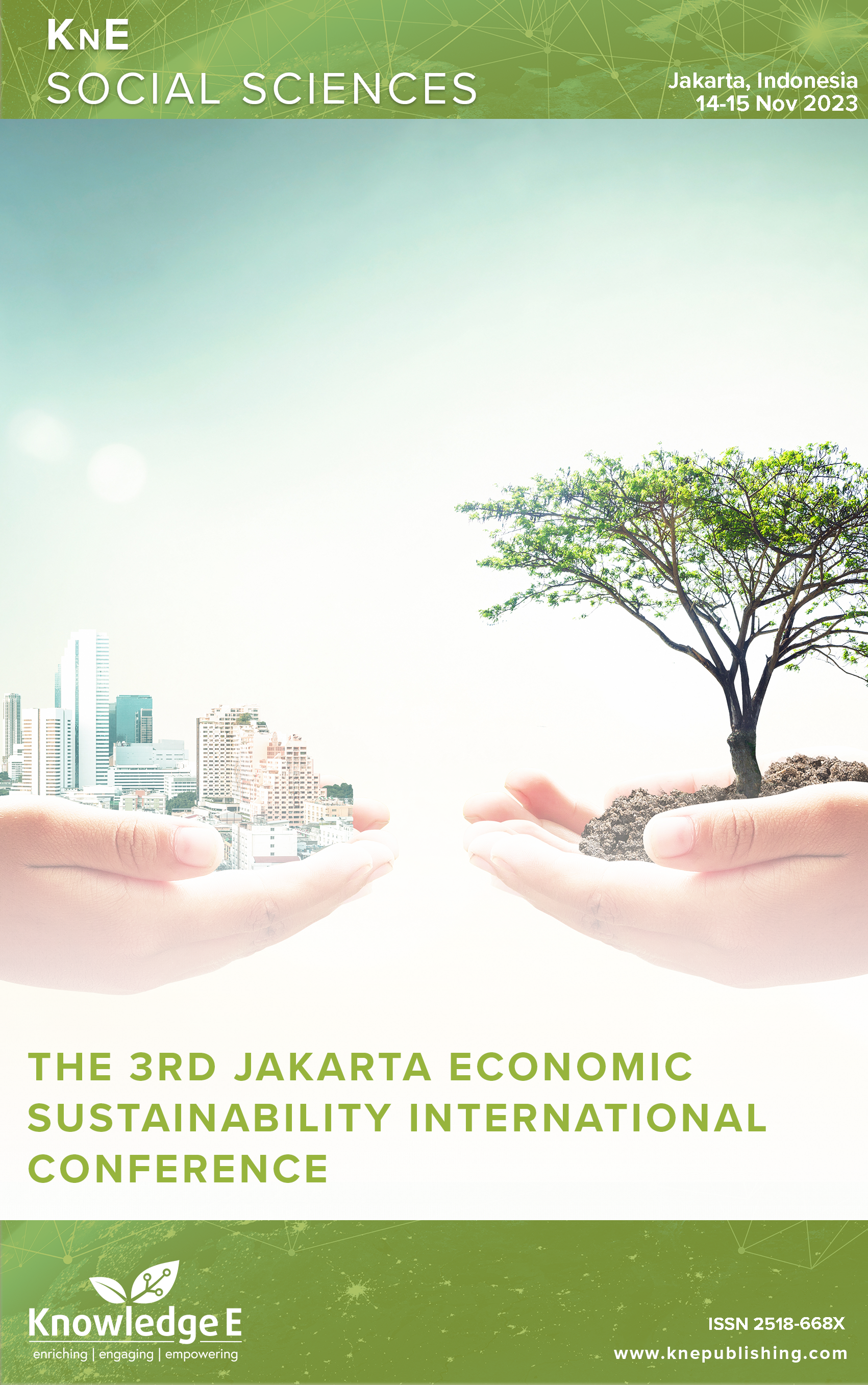An Examination of the Logistics Infrastructure's Impact on the Economic Growth of ASEAN
DOI:
https://doi.org/10.18502/kss.v9i20.16470Abstract
Despite the substantial economic potential, ASEAN faces challenges in meeting its infrastructure investment needs, resulting in suboptimal logistics performance for several countries. This study proposes an analysis of the contribution of logistics infrastructure and infrastructure investment in ASEAN countries to the overall economic growth of ASEAN. This study also aims to provide valuable insights for formulating effective policies that promote regional connectivity and accelerate economic integration in the ASEAN region. This study employs a fixed effect model with panel data from eight ASEAN nations (Cambodia, Indonesia, Malaysia, Myanmar, the Philippines, Thailand, Singapore, and Vietnam) gathered between 2021 and 2022. The results show that ASEAN countries’ logistics infrastructure is yet to affect ASEAN economic growth optimally. However, ASEAN countries’ domestic infrastructure investment significantly and negatively affects ASEAN economic growth. ASEAN governments must prioritize and actively develop logistics infrastructure, both nationally and regionally, to help develop regional linkages and promote sustainable economic growth rates. They should also intensify coordination efforts, optimize regional financial integration, identify alternative funding sources, and assess regulations restricting private sector participation to maximize private sector investments in infrastructure development, including public-private partnership (PPP).
Keywords: ASEAN, economic growth, fixed effect, infrastructure investment, logistic infrastructure
References
Todaro MP. Economic development. Harlow: Addison Wesley; 2000.
ASEAN [Internet]. Jakarta: ASEAN; 2024. Logistics services: Logistics and transport services sectoral working group [cited 2023 Jun 8]. Available from: https://asean.org/asean-economic-community/sectoral-bodies-under-the-purviewof- aem/services/logistics-services/
ASEAN [Internet]. Jakarta: ASEAN; 2024. About ASEAN: Overview [cited 2023 Jun 8]. Available from: https://asean.org/asean/about-asean/overview/
ASEANStats. ASEAN economic progress. Jakarta: ASEAN Secretariat; 2017.
Asian Development Bank. Meeting Asia’s infrastructure needs. Mandaluyong, Philippines: Asian Development Bank; 2017.
Mankiw NG. Principles of macroeconomics. Ohio: Thomson South-Western; 2004.
Lucas RE Jr. On the mechanics of economic development. J Monet Econ. 1988;22(1):3–42. DOI: https://doi.org/10.1016/0304-3932(88)90168-7
Barro RJ, Sala-i-Martin X. Convergence. J Polit Econ. 1992;100(2):223–51. DOI: https://doi.org/10.1086/261816
Romer PM. The origins of endogenous growth. J Econ Perspect. 1994;8(1):3–22. DOI: https://doi.org/10.1257/jep.8.1.3
Prasetyo RB, Firdaus M. Pengaruh infrastruktur pada pertumbuhan ekonomi wilayah di Indonesia [The influence of infrastructure on regional economic growth in Indonesia]. Jurnal Ekonomi dan Kebijakan Pembangunan. 2009;2(2):222-236. (Indonesian)
Radiansyah D. Analysis of infrastructure contribution to regional economic growth in Indonesia (Year period 1996-2008) [Master thesis on the Internet] Jakarta: University of Indonesia; 2012.[ [cited 2023 Jun 2]], Available from https://lib.ui.ac.id/m/detail.jsp?id=20290966&lokasi=lokal
Pradhan RP, Norman NR, Badir Y, Samadhan B. Transport infrastructure, foreign direct investment and economic growth interactions in India: the ARDL bounds testing approach. Procedia Soc Behav Sci. 2013;104:914–21. DOI: https://doi.org/10.1016/j.sbspro.2013.11.186
Gholami R, Lee SY, Heshmati A. The causal relationship between ICT and FDI. Finland: United Nations University (UNU); 2005.
Tripathy N, Srikanth M, Aravalath LM. Infrastructure investment and economic growth: evidence from India. Journal of International Business and Economy. 2016;17(1):91–111. DOI: https://doi.org/10.51240/jibe.2016.1.5
Novianti T, Rifin A, Panjaitan D, Wahyu SR. The infrastructure’s influence on the ASEAN countries’ economic growth. Journal of Economics and Development Studies. 2014;2(4):17. DOI: https://doi.org/10.15640/jeds.v2n4a17
Calderón C, Servén L. Infrastructure and economic development in Sub-Saharan Africa. J Afr Econ. 2010;19 Supplement 1:i13–87. DOI: https://doi.org/10.1093/jae/ejp022
Kodongo O, Ojah K. Does infrastructure really explain economic growth in Sub- Saharan Africa? Review of Development Finance. 2016;6(2):105–25. DOI: https://doi.org/10.1016/j.rdf.2016.12.001
Sandjaja A. Heriyanto. Metode penelitian [Research methods]. Jakarta: Prestasi Pustaka; 2006. (Indonesian)
Baltagi B. Econometric Analysis of Panel Data. 2nd ed. Chichester: John Wiley and Sons; 2001.

